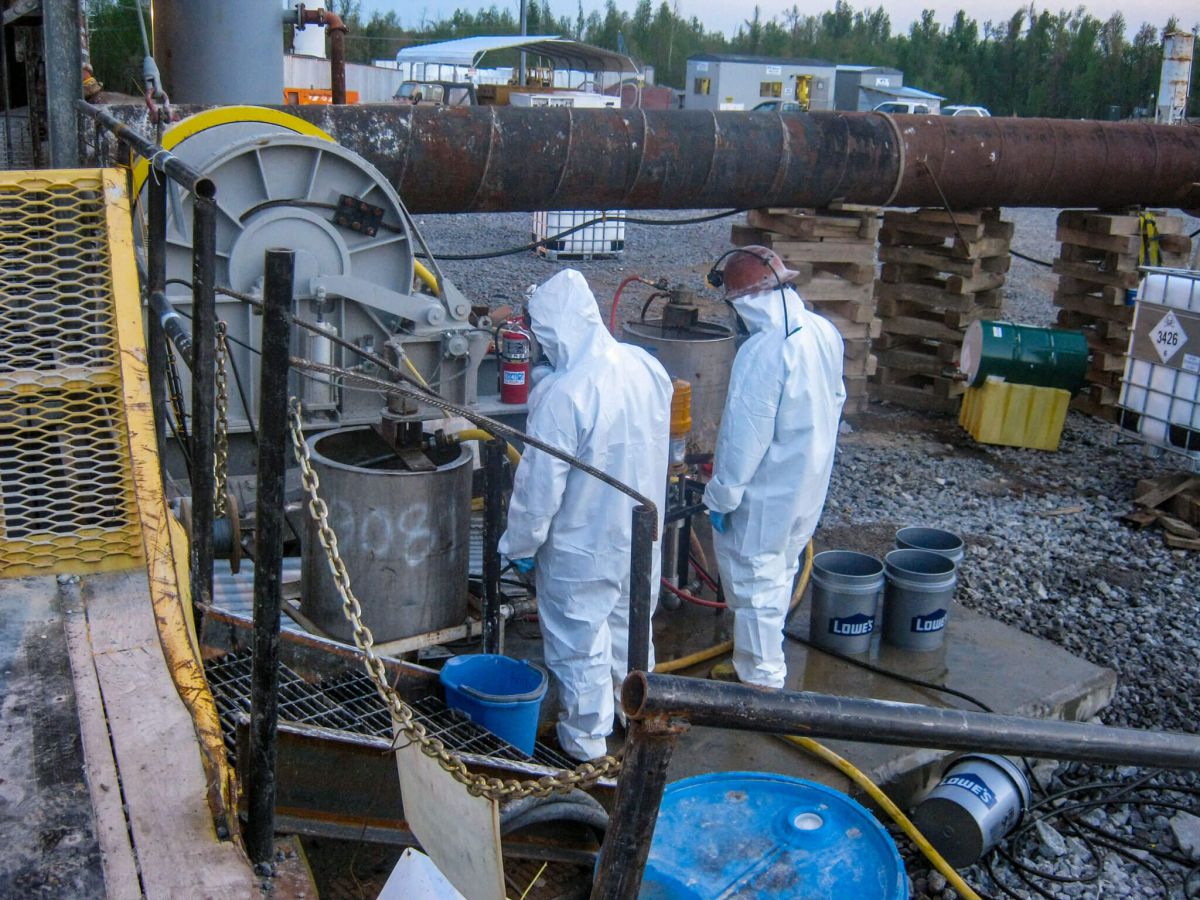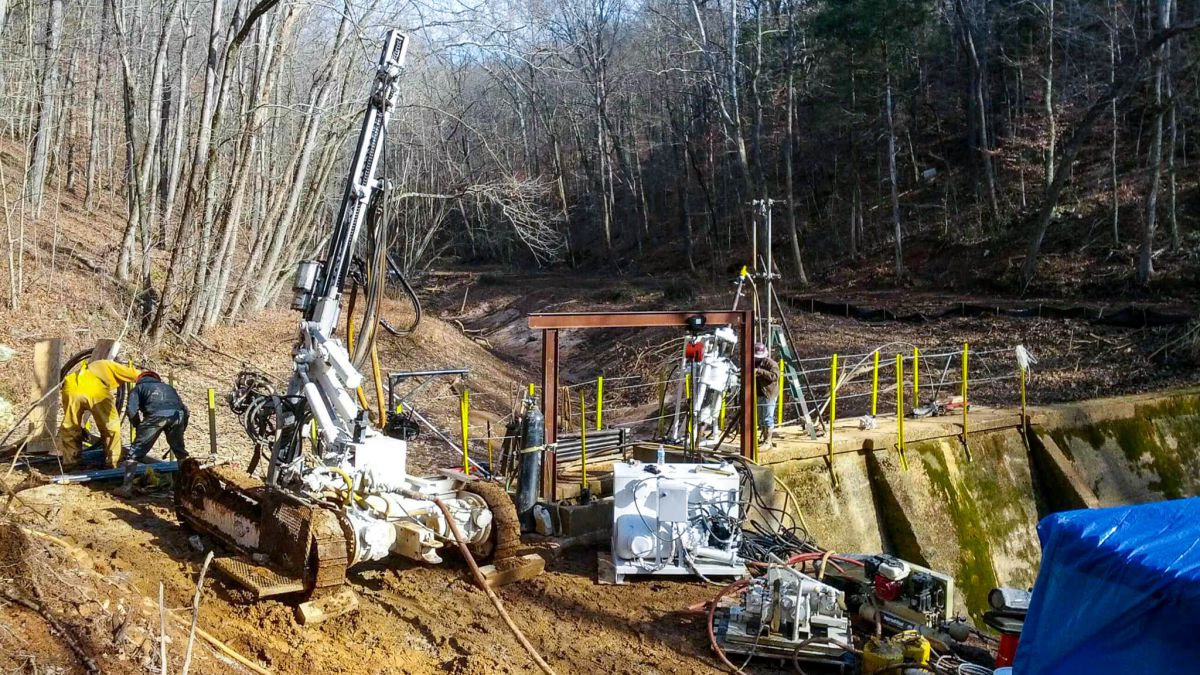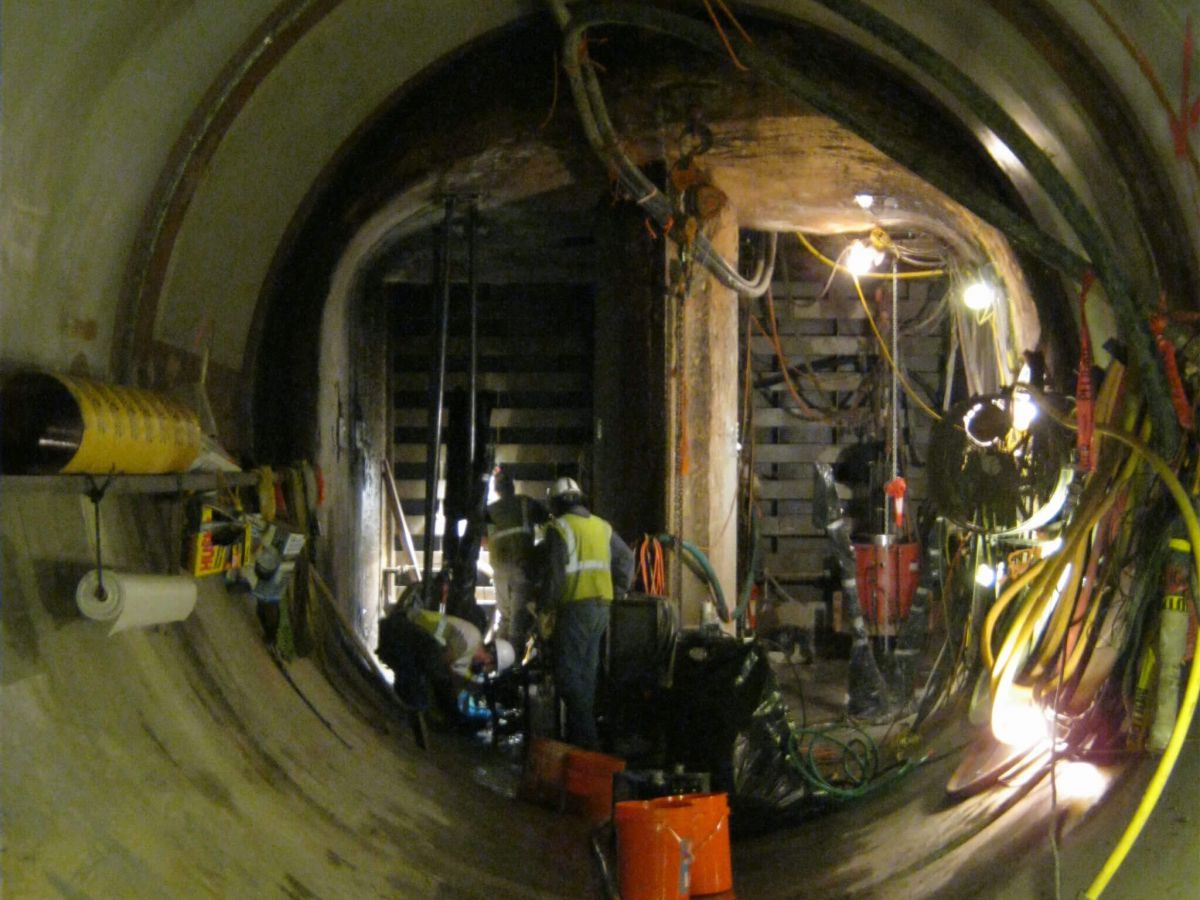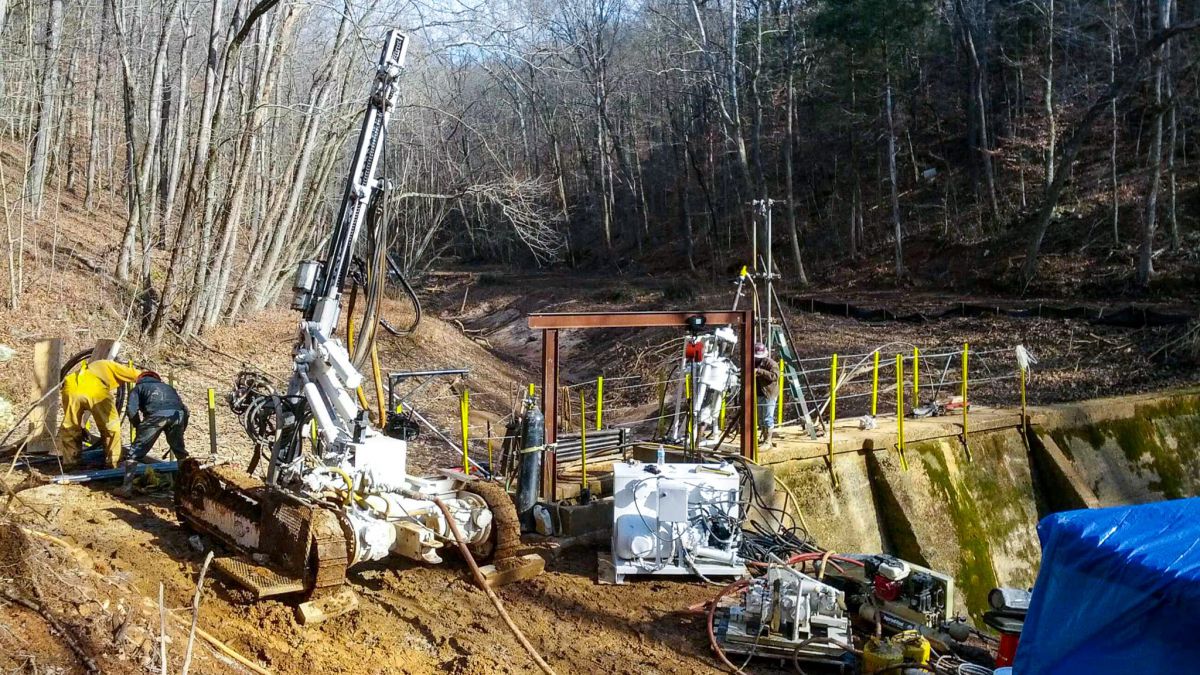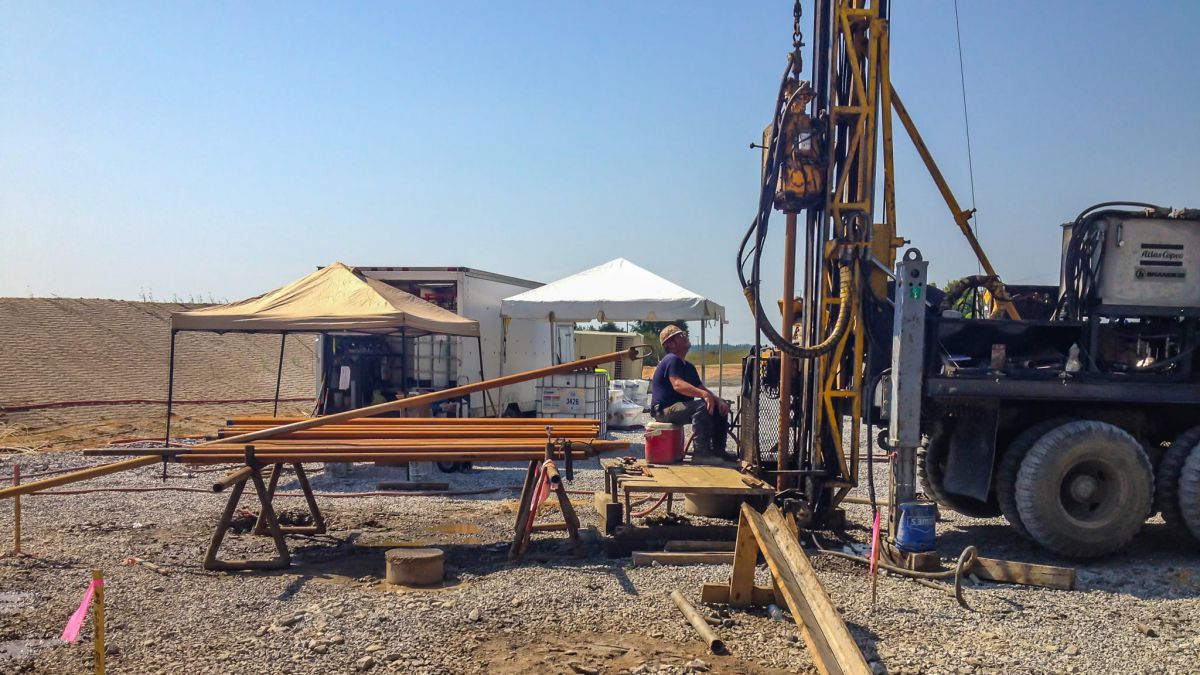Grouting
A wide variety of grouting services exist including contact grouting, consolidation grouting, pre-excavation grouting, chemical grouting, water cut-off, permeation grouting, grout curtains, etc. and we have experience performing grouting with numerous grout types, allowing us to apply our grouting services to virtually all geologic settings. Drilling work is performed in support of grouting operations as well as for other drilling applications. Much of our drilling work is performed on difficult access projects.
Consolidation grouting is a general term for grouting that is carried out within a rock mass with the intent of filling rock mass discontinuities. The process involves injecting a grout material to fill the discontinuities, which are the pathways through which fluids or gases migrate in most rocks. With grout filling the rock discontinuities, the hydraulic gradient is reduced as the liquids or gases move through the grout, ultimately reducing or stopping migration.
Permeation grouting is a general term for grouting that is carried out to fill pervasive void space inherent to the formation of the material being grouted. Generally, this type of grouting is done within soil, however, also may be applied to consolidated materials, such as poorly cemented sedimentary formations.
Structural grouting is done to improve the performance of manmade constructions. Structural grouting is commonly done in tunnels and underground structures where areas are mined, a structure is built, and the void between the structure and the mined material needs to be filled (contact grouting). Additionally, structural grouting may be done within a structure to fill cracks or correct structural deficiencies.
Contact grouting involves the filling of void space between a cast-in-place (CIP) structure and the in-situ geo-material or another structure. It may be similar to annular space grouting, however, when contact grouting, normally the extent of the void space is not known. Generally, the intent of contact grouting is to increase the structural integrity of the structure. Contact grouting is often done in association with CIP liners for tunnels, shafts, mine plugs, etc.
Compaction grouting is the process of injecting a low mobility, low slump grout to improve the density of loose, granular soils. The grout is injected through the inside of a drill pipe that is slowly removed in lifts as the specified pressure or volume is met. As each zone is pressurized the surrounding soils densify and create a grout column surrounding the drill pipe. This type of grouting is typically performed in conjunction with Cap grouting to remediate the effects of sinkholes and repair the damaged overburden soils in Karst conditions. Cap grouting is the process of injecting a cement-based grout and creating a cap over a sinkhole void to prevent further soil loss.
Bituminous grouting is also known as asphalt grouting. This grouting technique involves the injection of an asphalt material (similar to roofing tar). The method is almost exclusively used for stopping large inflows (generally greater than 1,000 gpm), although may be used in applications where its elasticity in the cured state is desirable. Bituminous grouting is generally used where void size or water flow is too great to allow other grouting methods to work due to grout washout.
Many people use the term “Chemical Grouting” to refer to any grouting technique that is performed with chemical grouts. However, this can be confusing due to the large number of chemical grouts available and the numerous grouting techniques for which they can be utilized. Generally, chemical grouts may be applicable for any type of grouting technique (structural, permeation, consolidation). The decision to use a chemical grout should be based on the advantages of the chemical grout over cementitious grouts, as the material cost is generally higher.
Axiom performs drilling in support of its grouting services as well as performing standalone drilling projects. Our drilling experience includes top drive rotary percussive, top drive rotary, down-hole-hammer, wire-line core drilling, and thinwall core drilling. Our drillers have performed drilling up to several thousand feet in depth and up to 18 inches in hole diameter.


